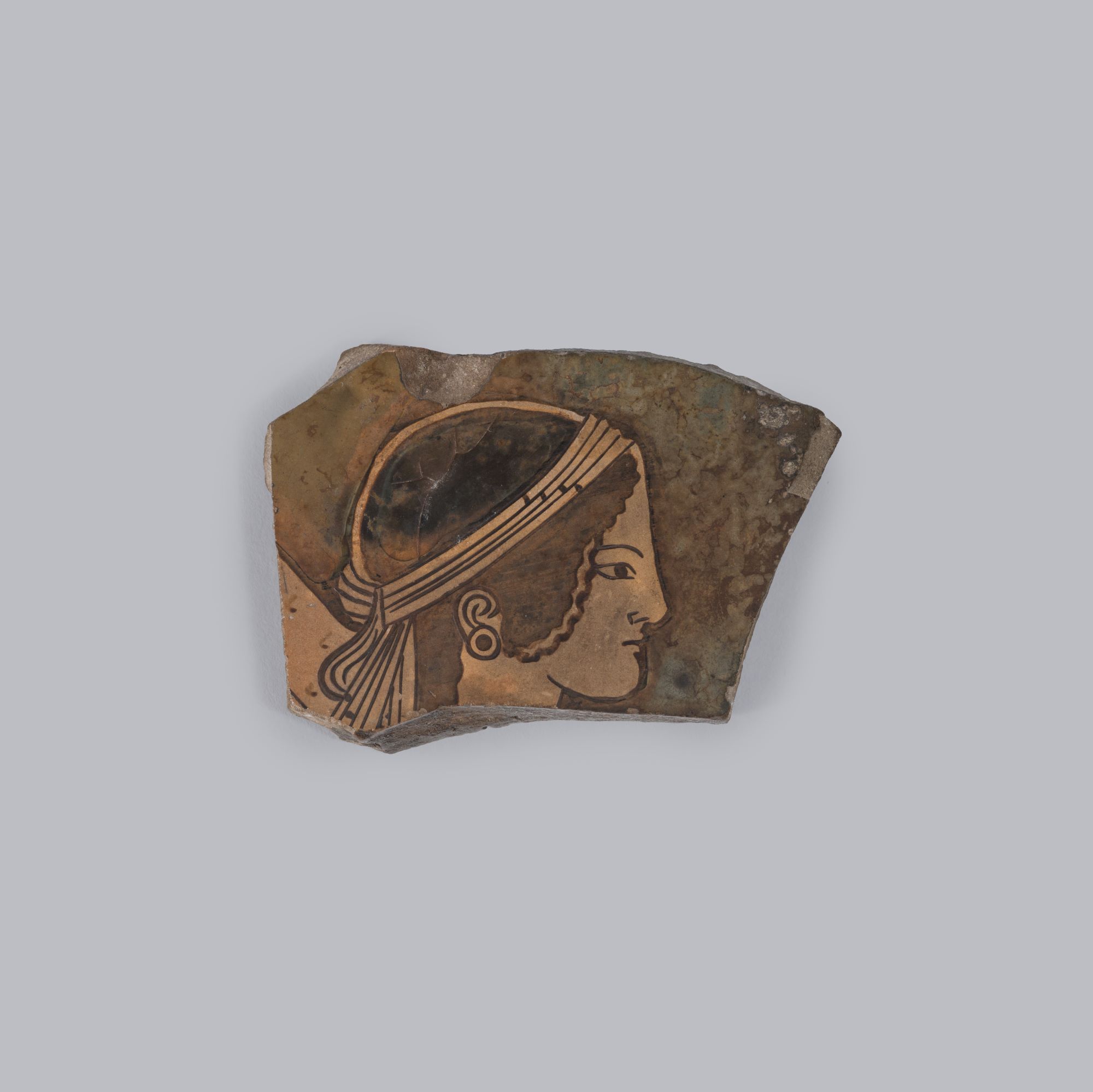
Fragment of a Calyx Krater [Gr27]
Athenian Red-Figure, c. 500 BC
Painted terracotta (h. 3.6 cm, w. 4.8 cm)
Interior: painted black. Exterior: head of a Nike
This fragment belonged to a calyx krater, a large vessel shaped like the cup (or calyx) of a flower, which was used for mixing wine at the symposium. It shows the head of the goddess Nike, recognisable from the beginnings of a wing just visible behind her. She wears an earring and her hair is bound in a quadruple tainia. Across each strand of the tainia is a bar. The outlines of a preliminary sketch are visible around the edge of Nike’s head and beneath the lines of her eyelids. This would have been pressed into the clay with a small, blunt tool to help the painter plan his design.
The painter of this fragment is known as the Berlin Painter, after an amphora in the Antikensammlung in Berlin. He was active from about 500 to 460 BC and was one of the most accomplished, prolific and influential red-figure painters. The importance of the Berlin Painter was first recognised by the archaeologist and art historian Sir John Beazley (1885-1970), who studied thousands of Athenian vases and identified hundreds of different painters. He did this by concentrating on the idiosyncratic ways in which they drew the details of their figures, such as ankles, ears and eyes. This approach allowed him to assign even very small fragments, like this head of Nike, to specific painters.
Literature: R. Foster, Winchester College Treasury: a guide to the collections (Winchester, 2016), pp. 48-49; J. Falconer and T. Mannack, Corpus Vasorum Antiquorum: Great Britain, Fascicule 19: Winchester College (Oxford, 2002), p. 10, plate 8.9; J.D. Beazley, Attic Red-Figure Vase-Painters 2nd edn. (Oxford, 1963), p. 205.118; J.D. Beazley, Attic Red-Figure Vase-Painters (Oxford, 1942), p. 137.90; J.D. Beazley, Der Berliner Maler (Berlin, 1930), plate 13.4; J.D. Beazley, The Berlin Painter (Mainz, 1974), plate 13.4; J.D. Beazley, Attische Vasenmaler des rotfigurigen Stils (Tübingen, 1925), p. 81.67; M.B. Herford, A Handbook of Greek Vase Painting (Manchester 1919), p. 83, fig. 10; J.D. Beazley, Attic red-figured vases in American Museums (Harvard, 1918), p. 40; Winchester College Memorial Buildings: Department of Classical Art (Winchester, 1909), p. 18 (no. 44.4)
Provenance: Gift of B.J.M. Dumas before 1909
Location: Treasury, Gallery 3